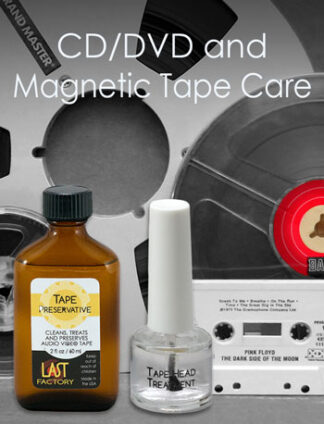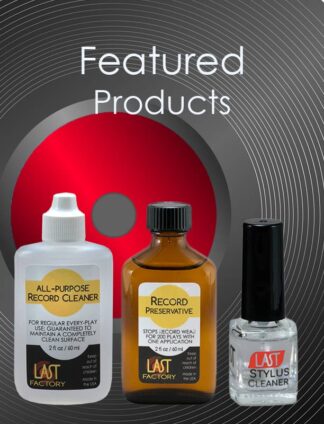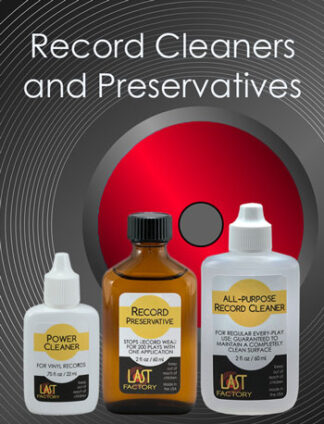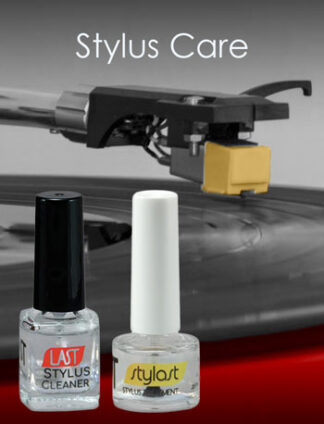 Noticed that after using Last Record Preservative, the first couple of times that I play a record, I end up with what appears to be a dust ball on the stylus even though I use a ultrasonic machine and record vacuum to clean prior to applying, is this normal? – T.B.
Noticed that after using Last Record Preservative, the first couple of times that I play a record, I end up with what appears to be a dust ball on the stylus even though I use a ultrasonic machine and record vacuum to clean prior to applying, is this normal? – T.B.
Hello Mr. B,
We have seen the same thing happen here at the company. We think the following is the cause.LAST Record Preservative has a very high affinity for vinyl. At the time the record is manufactured, the pressure inside the clamped record press reaches thousands of lbs/sq. in. As part of the hockey sized biscuit of heated vinyl there are some components that have two functions. One is to serve a “mold release agent” so that on completion, when the press opens, the new record does not stick to the face of the molds. The other serves as an “internal lubricant” so that as the vinyl moves from the center of the press toward the outer edge, it does so smoothly and uniformly (at the same time completely filling the cavity) so that no air is trapped within the plastic (or on its surface). While the press is closing and clamping, high temperature, high pressure steam is moving inside the mold faces to ensure that the vinyl is highly molten and mobile. At the completion of the molding cycle, the steam is replaced with chilled water so that the mold faces and the record are cooled way below the melting point of the vinyl. HOWEVER, the pressure inside the cavity is still Very high. After the cooling cycle, the press is opened and the brand new (still shiny) record is removed from the press and placed on a spindle for further cooling. At some point the spindle containing newly pressed records is moved to a (hopefully) clean room for visual check (bubbles, voids, deformities, etc.). After QC the records are placed into sleeves, and then the record jacket (or box).
Go back to the “still shiny” statement. The “shiny” is the aforementioned mold release agent and internal lubricants. Those were never removed from the playing surface of the records. And, in spite of ultrasonic cleaning and subsequent record vacuum cleaning, some of the compounds can still be bound to the groove surface. Various manufacturers use different “Secret Sauce” or “Proprietary Compounds” which they will not disclose. There are also different manufacturers of the vinyl pellets used in the manufacturing of records. So the amount or mix of the additives varies. And sometimes it is the skill and experience of the press operators that determine the amount and nature of any residue left on the record surface.
Using a magnifier, or better yet a microscope, take a careful look at that dust ball. Our experience tells us that the (relatively) long, thin fibers usually found within a dust ball accumulation are from the mold release agent component. The LAST Preservative has “crawled” under the residue, allowing it to be swept away by the passing stylus.
If a ball of black tarry material is discovered, that is usually internal lubricants that have diffused to the surface due to the passage of the stylus. The stylus foot print is so small (relative to the tracking force) that the stylus sets up a “bow wave” or pressure wave in the vinyl. A byproduct of that is movement, or diffusion of internally unbound lubricant material to the surface. This is not commonly seen, but can happen. When it does occur, the transport process ends after a few plays.
I regret that this response is so long. You asked a serious question, and I have attempted to answer as completely as I can. I hope this helps explain what you are experiencing.
Thank you for your query,
Walter Davies





